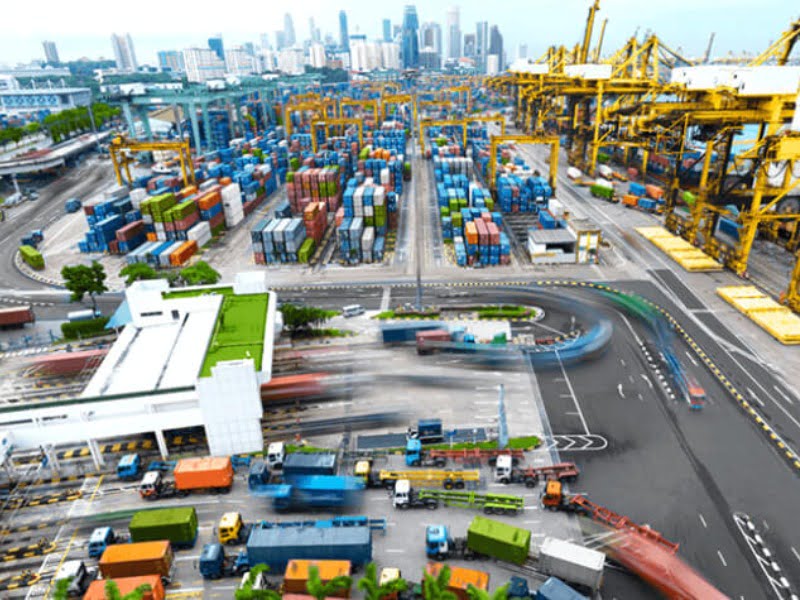As interesting as the topic of reshoring might be to some manufacturers, its discussion in Australia relies heavily on hunches and anecdote.
In March 2019, when this website asked a respected economist with expertise in manufacturing about reshoring in Australia, they replied that they had no research specific to the topic.
“Perhaps Australian businesses are more focussed on building their role in international supply chains, rather than maximising their Australian-based activity,” they suggested, though it was hard to be certain, given a lack of evidence. Accordingly, they did not want to be quoted by name.
Life has, of course, changed a lot in the last two years.

Twenty-twenty saw an apparent resurgence of interest in the topic, sometimes described in terms of “economic sovereignty” or other terms. This website reported on contract manufacturers who spoke of increased enquiries for people looking to bring production home.
Freight woes
Perhaps it is a good time to return to the subject, with the difficulties for importers due to a squeeze on international freight.
The pandemic has encouraged a shift in spending from services to goods, leading to demands on capacity that can’t be met, buildups of empty containers at ports around the world, and price increases. The Financial Times reported last week that shipping costs from China to Europe had “more than quadrupled in the past eight weeks.”
“All around the world, empty shipping containers are in the wrong place. They are in the countries that receive cargo, like Australia,” is how Shipping Australia put it in a recent explainer.
“They need to be in the places that send cargo, like China.”
Startup Foundri, which is building an online marketplace to link local manufacturers with those who need things made, predicts Australian companies will increasingly look onshore. Co-founder and chief executive Adam Weaver says they have “had a few discussions with customers” who are looking to reshore, predominantly due to logistical difficulties, with local supply “being more manageable during these uncertain times.”
“The pandemic has forced people to rethink how we get new products produced and will soon realise that it makes sense as it is far easier to communicate with locals than offshore,” Weaver tells @AuManufacturing.
“Delivery times to customers will also be reduced and prices will be less due to the removal of increased freight costs.”
Making the case
In the United States, the Reshoring Initiative and The Association For Manufacturing Technology (owner of The International Manufacturing Technology Show) are currently running a “Rebuilding the Supply Chain” survey.
The survey is gathering data on topics such as the severity of disruptions to supply chains due to Covid-19, the role of technology in known cases of reshoring, and what products or components hold the biggest opportunity for reshoring.
The RI was founded in 2010, and among its work is a Total Cost of Ownership estimator, which allows companies to make a holistic decision based on some 30 different factors. These include shipping time, carrying costs, quality and re-work, and IP risk.
The RI also keeps a comprehensive list of companies bringing production back home (and of foreign direct investment in manufacturing) as well as the impact of this in terms of new jobs.
More data and real-world examples would not go astray in any conversation we might have about localising production here.
“One reason that reshoring and such has happened is if you believe it’s possible, it’s because we’ve proven that it’s real. It’s easier to believe something is possible if you see it,” as the institute’s founder Harry Moser told us a couple of years ago.
“If you see a ghost, you’re more likely to believe in ghosts.”
“The pandemic has forced people to rethink how we get new products produced and will soon realise that it makes sense as it is far easier to communicate with locals than offshore,” says Adam Weaver
According to his group’s research, nine-tenths (171,000) of all new US manufacturing jobs created in 2017 were the result of reshoring.
A figure such as that goes a long way in telling a story, and we simply don’t have anything like it here. When reshoring does get a guernsey here, if it has any sector-specific figures at all, they are borrowed from overseas.
For now, the best we seem to have in Australia are hunches and the occasional anecdote.
Last week reshoring did get a run in local media, albeit for a well-known economist to suggest he saw it as unlikely to take off.
And besides the odd example, notably Ty Hermans of Evolve Group, there are few people here that will tell the reshoring story.
Weaver, however, is optimistic we will see more of it this year and beyond.
“At present one of the pain points for customers seeking more specialised products to be made is that there are limited suppliers here in Australia,” he says.
“As demand increases Australian manufacturers will look to invest in technology and equipment to capture the demand creating a more sustainable industry in Australia and potentially we will see a growth within the industry.”
We would welcome that, a mounting collection of positive examples, and more data.
This story originally appeared in @AuManufacturing. You can subscribe to its newsletter here.
Do you know more? Contact James Riley via Email.
